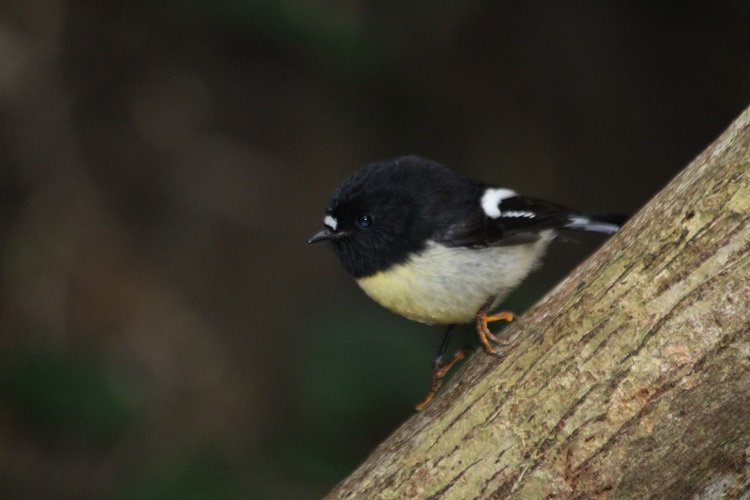
Tomtits are not a species I have ever talked much about on this blog. This isn’t because I don’t like them, on the contrary, they rate as one of New Zealand’s cutest birds, and I’m a big fan of cute. No, it’s simply a case of not seeing them very often. This isn’t because they are particularly rare; I’ll see them fairly easily in suitable habitat. There just aren’t many around, say, Wellington, were I do most of my birding. I’m not actually sure why this is. They were present in Karori Sanctuary but have declined as other species have prospered. Competition in small habitats perhaps? There seem to be plenty nearby in Wainuiamata (according to eBird) but I haven’t the space here to list the reasons why I stay away from Wainuiamata, so let’s just say I don’t see them often.
Tomtits, as you might expect from New Zealand, aren’t actual tits (Paridae) but are one of New Zealand’s four Australasian robins (also not robins). They are a widespread species that shows quite a bit of variation: there are five subspecies that are quite distinctive. The range across the main three islands and have remote island populations on the Chathams, Snares and Auckland Islands (the later two are archipelagos in the sub-Antarctic that I desperately want to visit). The Snares subspecies is entirely black, the North Island ones are pied, and the South Island, Chatham and Auckland subspecies are pied with a yellow band across the breast.
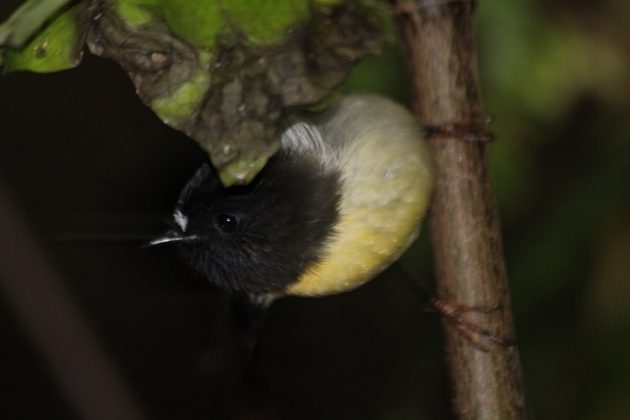 The yellowish band and wash of the breast is typical of the South Island subspecies
The yellowish band and wash of the breast is typical of the South Island subspecies
It’s the South Island subspecies that I recently saw on Blumine Island in the Marlborough Sounds. Unlike the Orange-fronted Parakeets that I couldn’t connect with on the island, the local Tomtits were very insistent that I notice them, posing beautifully on nearby branches. They went beyond the often unconcerned attitude that some New Zealand birds have and was seemingly actively curious about me.
Tomtits deserve our affection for more than their curiosity and cuteness though. They played an important role in one of New Zealand’s great conservation success stories, saving the Black Robin. The story of the rescue of the Black Robin is long, has many heroes and deserves it’s own story on this site, but for now it’s worth noting that scientists were able to use Chatham Tomtits as surrogates to increase the number of young Black Robins raised in a year. Considering the Black Robins were down to four birds at one point, this was a feat of no small importance. So let’s hear it for Tomtits!


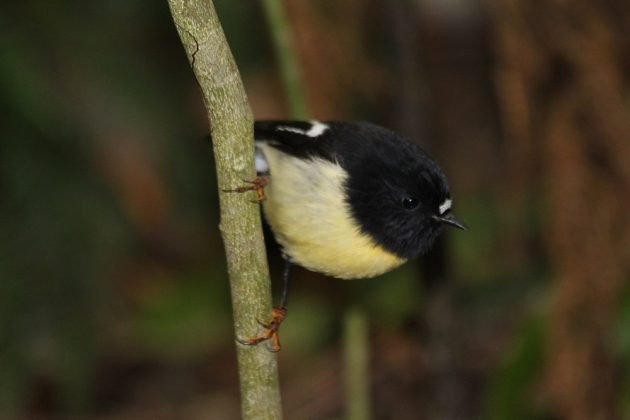
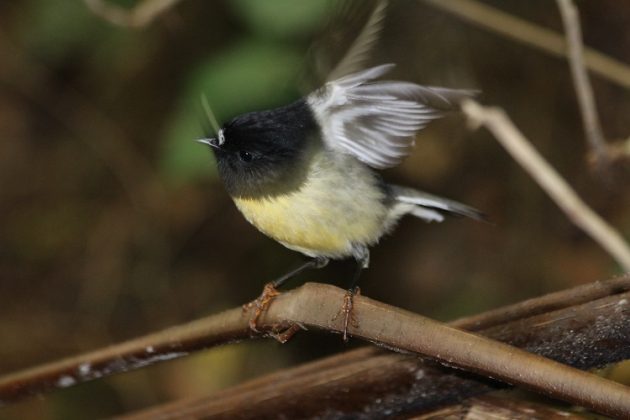
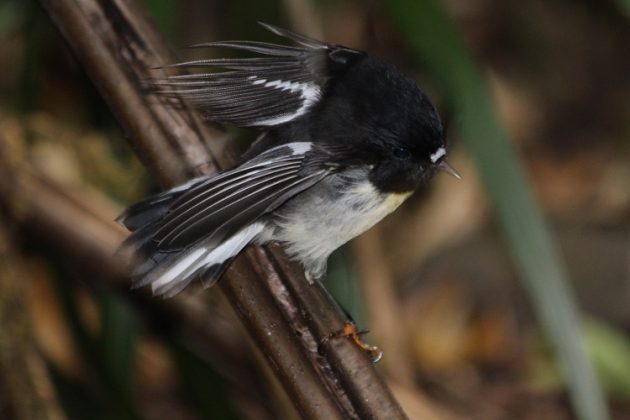











Teh cuteness … it tickles! Seriously, I didn’t think any bird could be cuter than a chickadee!
I’m with you on this, Duncan. I’m lucky in that I get to see these lovely little birds fairly often (here’s an example)